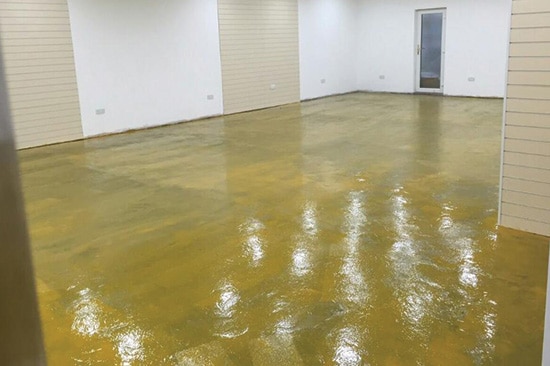In the realm of construction and building materials, DPM flooring, or Damp-Proof Membrane flooring, has become an essential component in ensuring the longevity and integrity of various structures. This article aims to provide a comprehensive guide to DPM flooring, exploring its characteristics, applications, installation process, and the benefits it offers in safeguarding buildings against moisture-related issues.
Understanding DPM Flooring:
Damp-proof membrane (DPM) flooring is a specialized type of flooring system designed to prevent moisture ingress from the ground into a building. It acts as a barrier that protects the floor covering, whether it be tiles, laminate, wood, or other materials, from the potentially damaging effects of rising dampness.
Key Characteristics of DPM Flooring:
- Moisture Resistance: The primary purpose of DPM flooring is to resist moisture, preventing groundwater or residual dampness from reaching the floor material. This is crucial in maintaining the structural integrity of the building and preserving the aesthetics of the floor covering.
- Versatility: DPM flooring solutions are versatile and can applied across various construction settings. Whether in residential, commercial, or industrial buildings, DPM flooring is suitable for both new construction and refurbishment projects.
- Materials: DPM flooring materials typically include high-density polyethylene (HDPE), polyvinyl chloride (PVC), or bitumen-based products. These materials provide effective moisture resistance while offering flexibility and durability.
Applications of DPM Flooring:
- Residential Construction: In residential buildings, DPM flooring is commonly used in basements and ground floors to mitigate the impact of rising dampness. It provides an effective barrier against moisture, ensuring the longevity of floor coverings and preventing issues such as mold growth and flooring damage.
- Commercial and Industrial Buildings: Commercial and industrial structures often utilize DPM floors in areas with high moisture exposure. Such as warehouses, factories, and storage facilities. This helps protect sensitive equipment, inventory, and flooring materials from the adverse effects of damp conditions.
- Refurbishment Projects: The DPM floor is a popular choice in refurbishment projects where existing buildings may have experienced moisture-related issues. Retrofitting with DPM floor solutions ensures that the refurbished space remains resilient to dampness, providing a long-lasting solution.
Installation Process:
The installation of DPM floor involves several key steps to ensure its effectiveness in preventing moisture ingress:
- Surface Preparation: The substrate, typically the concrete base, must be thoroughly cleaned and leveled before DPM installation. Any existing contaminants or irregularities on the surface may compromise the performance of the DPM.
- DPM Application: The chosen DPM material is then applied to the prepared substrate. This can be in the form of sheets, rolls, or liquid membranes, depending on the specific product. The material is laid out with overlaps to create a continuous barrier.
- Sealing and Adhesion: Proper sealing and adhesion are crucial to creating a seamless DPM. Joints and overlaps are sealed using specialized tapes or adhesives to prevent any potential gaps that could allow moisture penetration.
- Floor Covering Installation: Once the DPM is in place and fully cured, the chosen floor covering can be installed over it. This could include tiles, laminate flooring, vinyl, or any other suitable material. The DPM ensures that the floor remains protected against rising dampness.
Benefits of DPM Flooring:
- Moisture Protection: The primary benefit of the DPM floor is its ability to protect against moisture, preventing rising dampness and associated issues such as mold growth, flooring deterioration, and structural damage.
- Longevity of Floor Coverings: By creating a barrier against moisture, the DPM floor significantly extends the lifespan of floor coverings. This is particularly important in areas prone to damp conditions, ensuring that flooring materials remain in optimal condition over time.
- Health and Safety: DPM flooring contributes to a healthier indoor environment by preventing mold and mildew growth, which can adversely affect indoor air quality. This is especially crucial for spaces where occupants spend a significant amount of time.
- Cost-Effective Solution: Investing in a DPM floor proves to cost-effective solution in the long run. By preventing moisture-related damage, it reduces the need for frequent repairs or replacements of floor coverings, saving time and money.
Conclusion:
DPM flooring stands as a vital component in the realm of construction, offering effective protection against the pervasive threat of rising dampness. Its versatility, ease of installation, and ability to safeguard floor coverings make it an invaluable solution for various applications. From residential buildings to industrial facilities. As the construction industry continues to prioritize durability. Sustainability, and occupant well-being, DPM flooring remains a cornerstone in the quest for resilient and moisture-resistant structures.

